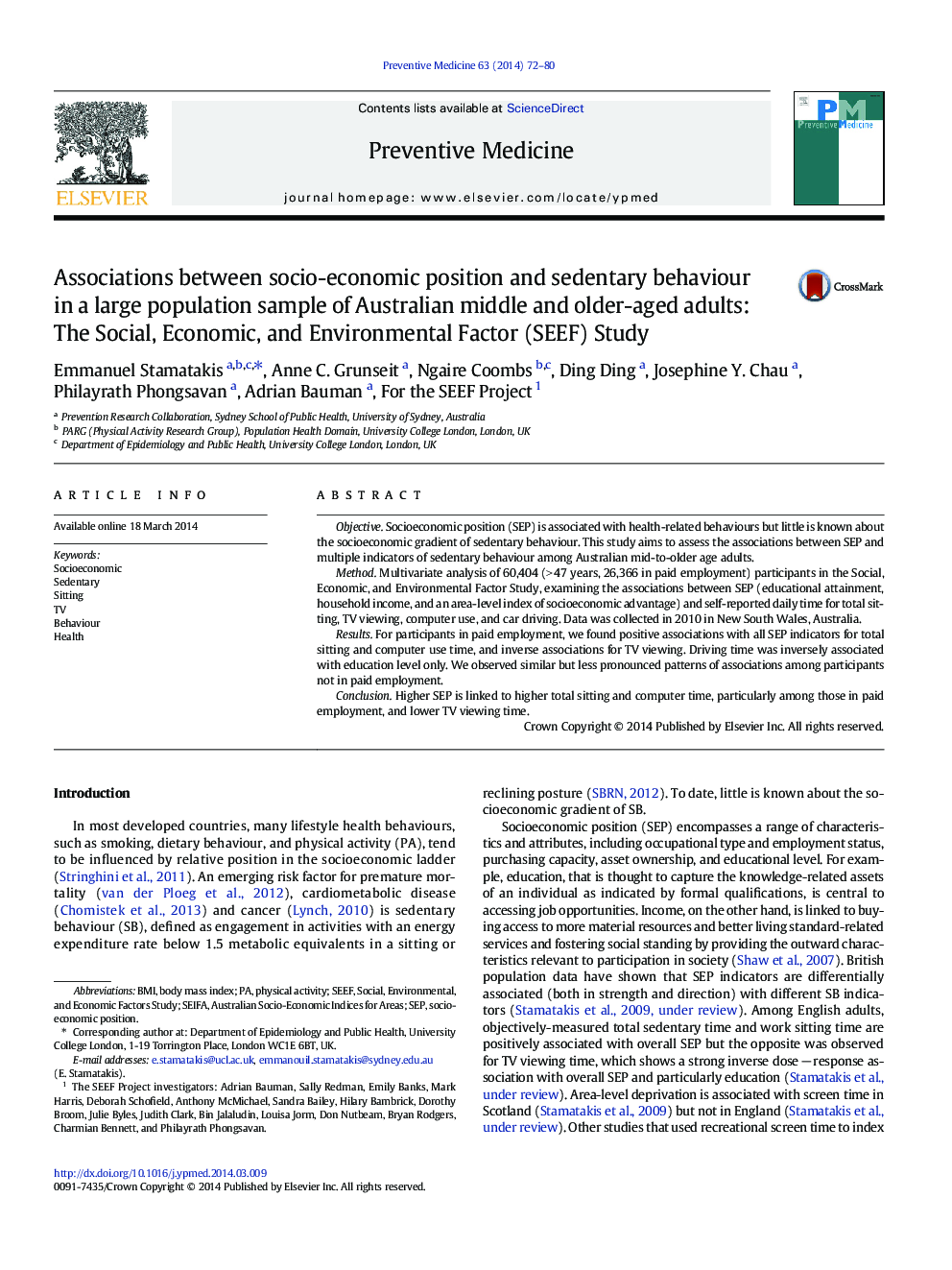| کد مقاله | کد نشریه | سال انتشار | مقاله انگلیسی | نسخه تمام متن |
|---|---|---|---|---|
| 3100538 | 1581651 | 2014 | 9 صفحه PDF | دانلود رایگان |

• We use data from a large sample (n = 60,404) of mid-age and older adults in Australia.
• We examine the socioeconomic gradients of different types of sedentary behaviour.
• Socioeconomic position was positively related to total sitting and computer time.
• Socioeconomic position was negatively related to TV viewing time.
• Associations were more pronounced among those in paid employment.
ObjectiveSocioeconomic position (SEP) is associated with health-related behaviours but little is known about the socioeconomic gradient of sedentary behaviour. This study aims to assess the associations between SEP and multiple indicators of sedentary behaviour among Australian mid-to-older age adults.MethodMultivariate analysis of 60,404 (> 47 years, 26,366 in paid employment) participants in the Social, Economic, and Environmental Factor Study, examining the associations between SEP (educational attainment, household income, and an area-level index of socioeconomic advantage) and self-reported daily time for total sitting, TV viewing, computer use, and car driving. Data was collected in 2010 in New South Wales, Australia.ResultsFor participants in paid employment, we found positive associations with all SEP indicators for total sitting and computer use time, and inverse associations for TV viewing. Driving time was inversely associated with education level only. We observed similar but less pronounced patterns of associations among participants not in paid employment.ConclusionHigher SEP is linked to higher total sitting and computer time, particularly among those in paid employment, and lower TV viewing time.
Journal: Preventive Medicine - Volume 63, June 2014, Pages 72–80